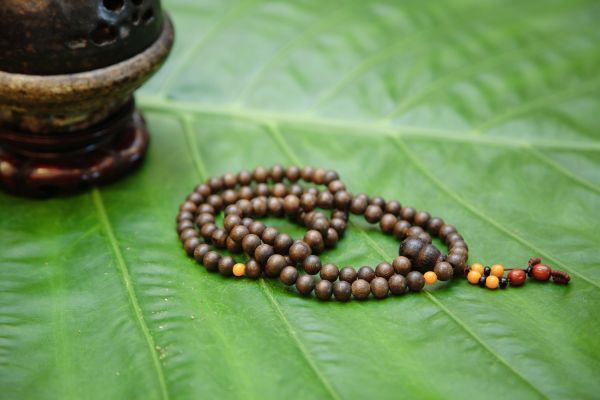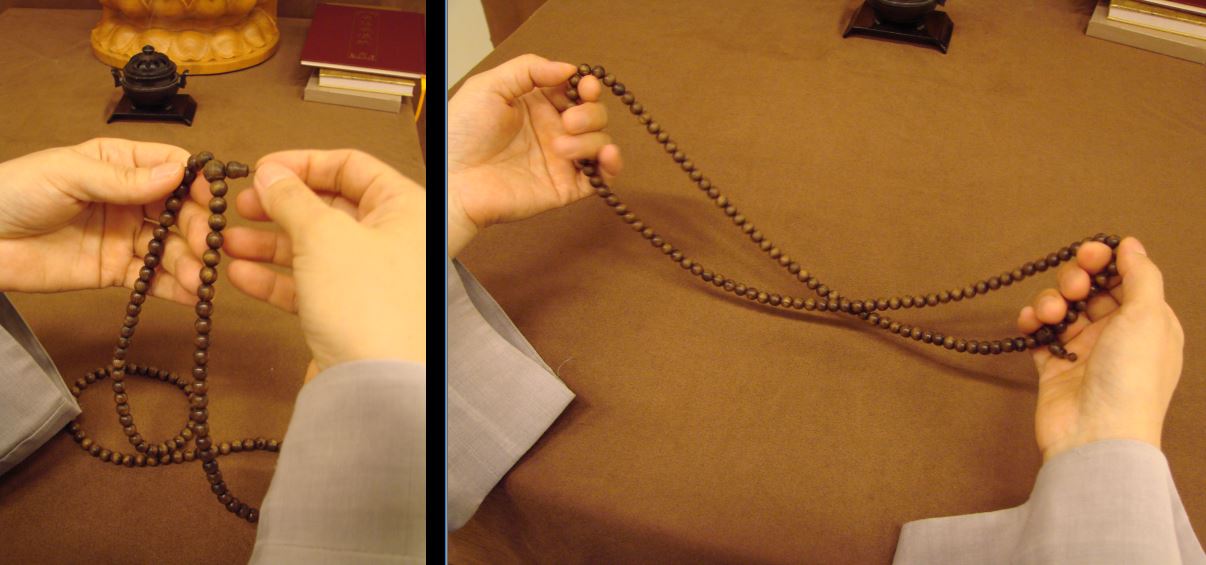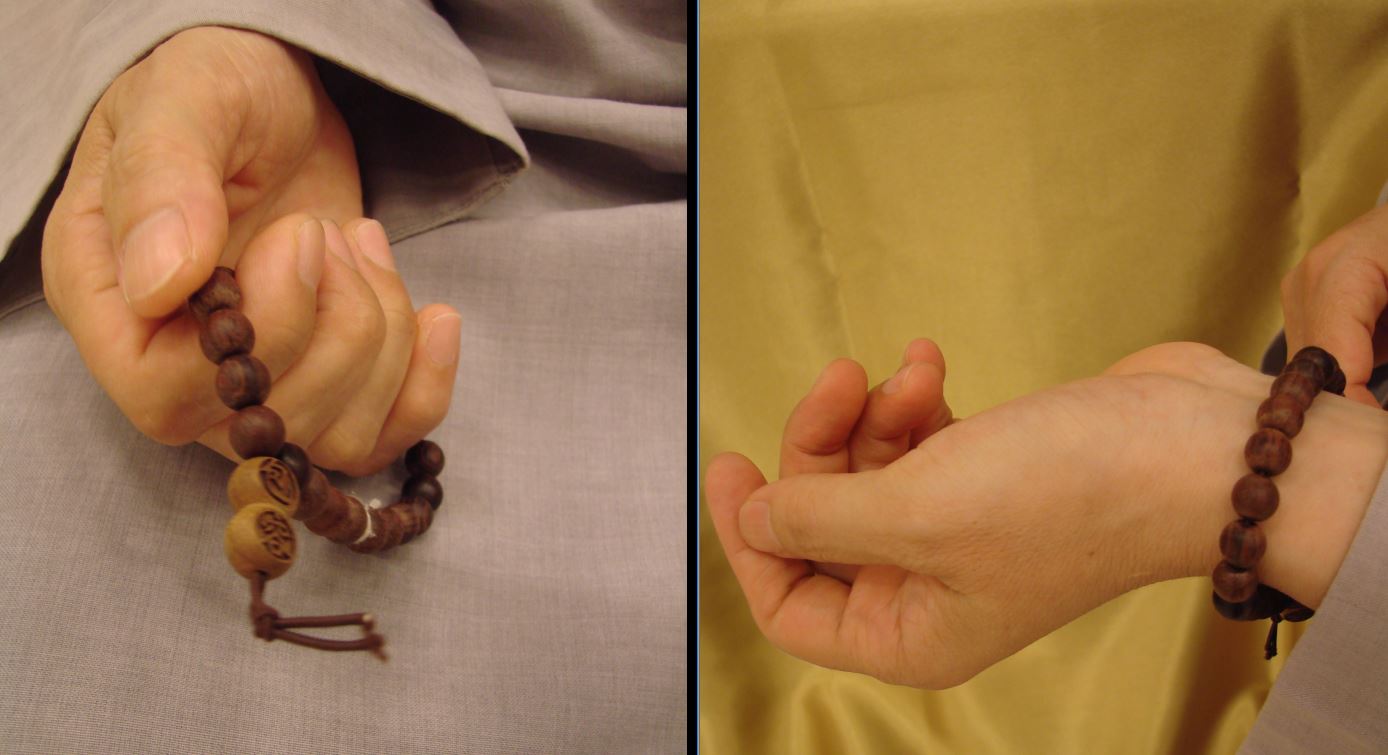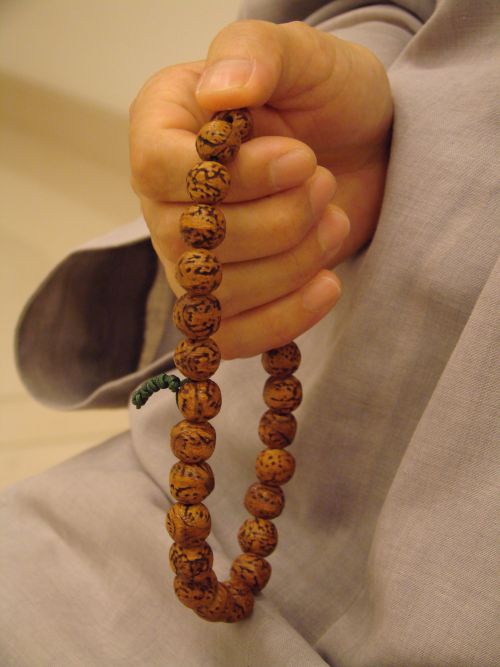Special Topics
Buddhist Mala
 The Buddhist Mala is one of the most common tools for Buddhist practice. It is used for counting the times of Buddha’s name recitation or mantra chanting. According to Supplement to the Biographies of Eminent Monks, the Buddhist Mala has been used by Chinese Buddhists for counting recitation for over a thousand years, beginning with the Tang Dynasty.
The Buddhist Mala is one of the most common tools for Buddhist practice. It is used for counting the times of Buddha’s name recitation or mantra chanting. According to Supplement to the Biographies of Eminent Monks, the Buddhist Mala has been used by Chinese Buddhists for counting recitation for over a thousand years, beginning with the Tang Dynasty. The origin of the Buddhist Mala is recorded in detail in the Scripture of the Seeds of the Soapberry. There was once a king named Virudhaka. He suffered from anxiety and eating and sleeping disorders due to constant worries about domestic problems such as wars, poverty, and diseases, etc. He asked the Buddha to teach him an expedient method so that he could keep practicing under such conditions. The Buddha suggested him to string together 108 soapberry seeds to make a mala so that he could carry it with him. When he felt agitated, no matter what he was doing, he could recite the Buddha’s name while sliding his fingers from bead to bead. In this way, he could calm down, thereby receivinginvaluable merit from the practice.
Though a mala string normally consists of 108 beads, according to the Scripture of the Seeds of the Soapberry, there are variations in the number of beads. Twenty-one, fifty-four, and 108 are common numbers, with each number embodying a unique meaning.
For example, the number twenty-one represents ten grounds plus ten perfections, plus Buddhahood; fifty-four symbolizes ten devout minds, ten abidings, ten practices, ten merit transfers , ten grounds, and the four wholesome roots; and 108 signifies one hundred eight kinds of samādhi to eliminate 108 kinds of vexations.
The Sutra also recorded that there were various kinds of materials for mala beads, such as gold, silver, brass, iron, stone, crystal, seeds of soapberry, seeds of lotus, etc. Nowadays, mala beads are commonly made of seeds of sacred fig, sandalwood, crystal, beeswax, plastic, jade, etc.
Whether it is a wrist mala of 21 beads, a carrying mala of 54 beads, or long mala of 108 beads, the way to use the mala is the same. First, hang the mala beads between the first and second knuckle of the index finger in one hand. Then, the thumb slides bead by bead, rotating the mala inward facing thes the body. Every time you slide one bead, recite the Buddha’s name once.
 When you are using a long mala with 108 beads, you can also rotate it with both hands. First, hold the mala on the fingertips of both hands and turn the mala into a shape of a horizontal 8. Each time you recite the Buddha’s name , the thumbs of both hands simultaneously slide one bead.
When you are using a long mala with 108 beads, you can also rotate it with both hands. First, hold the mala on the fingertips of both hands and turn the mala into a shape of a horizontal 8. Each time you recite the Buddha’s name , the thumbs of both hands simultaneously slide one bead. If you want to count the number of recitation times, you can use a mala with a head bead, which is shaped differently from the other beads, or possesses a knot. Start sliding from the head bead; after sliding through all the beads, you will know how many instances of the Buddha’s name you have recited.
Mala beads make it easy to practice because you can take them with you anywhere. When you are not using it, you can simply wear a short mala on the wrist until the next time you need to use it. It is suggested to place the long mala with 108 breads in a bag or pocket. Lay practitioners ought not to wear mala beads on the neck because it is usually the Head Monk or the Abbot of a monastery who would do so. In addition, out of respect for the Buddhist practice, it is better to keep mala beads away from food or other items.
The saying “Never forget to take a mala with you” points to the importance of the mala as a reminder to practice diligently. Whether or not we actually use a mala in practice is not necessarily the point.
Demonstration of Using Mala Beads
 Wrist Mala:
Wrist Mala:1. Hang the mala on one hand, between the first and second knuckle of the index finger. The thumb slides bead by bead, causing the mala to rotate inward towards the body. As you slide one bead, recite the Buddha’s name one time.
2. When you are not using it, you can wear the mala on yourwrist until the next time you need to use it.
 Carrying Mala:
Carrying Mala:Use a carrying mala in the same way you would use a wrist mala. It is longer and not easily worn on the wrist. It is suggested to put it in a pocket or a bag.
Long Mala with 108 beads:
1. If you would like to use this mala for counting, start rotating it from the head bead—that is, the bead that is shaped differently or has a knot.
2. To make it easier to use the long mala, you can turn the mala into the shape of a horizontal 8 and use both thumbs to slide the beads at the same time.
3. When you are not using it, you may wind the string of beads four to five times and wear it on the wrist. However, putting the mala in a bag is recommended.
(Demonstrated by Ven. Guo Zeng of Dharma Drum Mountain)
Resource: Issue 294 of Life Magazine, Dharma Drum Publishing Corporation
Text: 林鍾妏 (Lin Chung-wen)
Translation: Hsiao Chen-an
Editing: Yeh Shu-jen, Keith Brown
